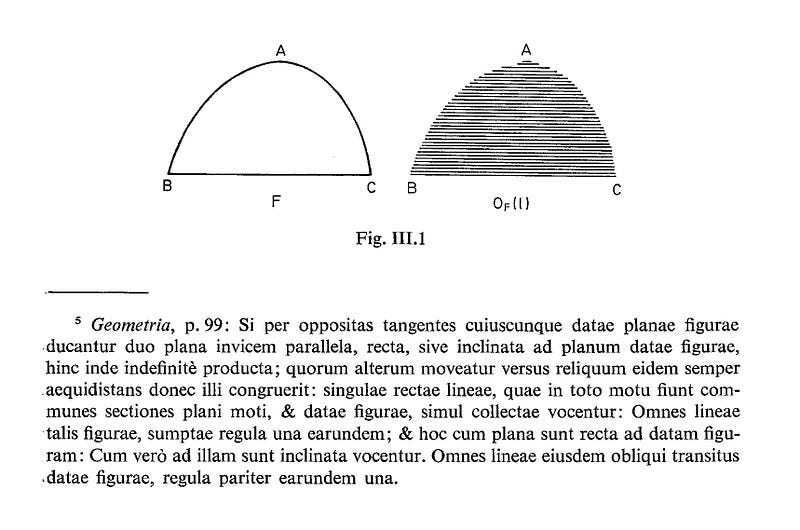Cavalieri’s Principle: Calculus of the Ancient Times
Before the Giants of Newton and Leibniz
Ancient Foundations of Calculus
If you have taken high school calculus, you will have heard the great names of Newton and Leibniz, who independently developed calculus around the same time. While there might be controversy over who first invented the subject, we can all agree that their contributions laid the foundations upon which much of modern mathematics is built.
But have you ever thought about the work of mathematics prior to Newton’s and Leibniz’s? In fact, we will take a glimpse into the near-century of vigorous investigations in the study of calculus before these two renowned mathematicians. Many of these prior examinations in this intellectual pursuit produced a multitude of intriguing and nonrigorous ways and techniques for meddling with infinities, areas and volumes.
In particular, we will look at a major geometric tool known as Cavalieri’s Principle.
Bonaventura Cavalieri
Born in Milan, Bonaventura Cavalieri was an Italian mathematician and theologian who lived in the late 16th and early 17th centuries. He is best known for his work in geometry, particularly in the area of indivisibles, which was an early precursor to the development of calculus by figures such as Newton and Leibniz. He also contributed to the study of logarithms and the geometry of motion. He was a member of the Jesuits, and his work was influential in the Catholic Church’s approach to science and mathematics.
An Indivisible
The notion of an indivisible, as an example, refers to the idea that an area is composed of a sum of infinitely many lines (the ‘Invisibles’). This concept was also embodied in Greek atomistic conceptions and part of medieval scientific theories.
Think of it as the physically smallest unit of an object, which you cannot divide further, that is an indivisible.
Cavalieri’s Work
In 1635, Cavalier vaguely solidified the concept of indivisibles into a mathematical technique for determining areas and volumes in his influential work, Geometry of Indivisibles.
He considered a geometric figure as an infinite number of indivisibles of lower dimensions. In layman’s terms, a surface or a plane consists of an infinite number of equally spaced parallel lines and a solid consists of an infinite number of equally spaced parallel planes.
The procedure for finding the area or volume of any figure is therefore to compare it to a second figure of equal height or width, whose area or volume is known, by setting up a one-to-one correspondence between the indivisible elements of the two figures and using Cavalieri’s Principle:
If the corresponding indivisible elements are always in a given ratio, then the areas or volumes of the two figures are in the same ratio.
An Illustration: An Ellipse and A Circle
As an example, we can ‘derive’ the area of an ellipse by comparing it to the area of a circle using Cavalier’s Principle.
Consider the ellipse equation and the circle equation of radius a.
Our knowledge of the graphs of ellipses and circles tells us that the major axis has length 2a, which also equals the diameter of the circle. Likewise, the minor axis of the ellipse has length 2b, where b < a.
The idea is that for all x-coordinates on which these two equations are defined, we want to find a one-to-one correspondence between the y-coordinates of the ellipse and the circle.
To do this, we can rearrange both equations so that y is the subject.
By algebra, we get the following relationship between the y coordinates of the ellipse and the circle.
Every y coordinate in the ellipse is b/a times the y coordinate of the circle of radius a.
Graphically, we can see the following.
Every indivisible, or every infinitely small line that makes up the ellipse is b/a times every line that makes up the circle of radius a.
And by Cavalieri’s Principle, the ellipse’s area is b/a times the area of the circle!
And that is an ancient method of geometry that underpins the developments of calculus!
This is a free newsletter, but if you would like to be one of my early supporters, consider becoming a paid member so that I can continue to bring out quality mathematical treats. 🍩
Happy reading,
Barry 🍩











Big brain baby <3